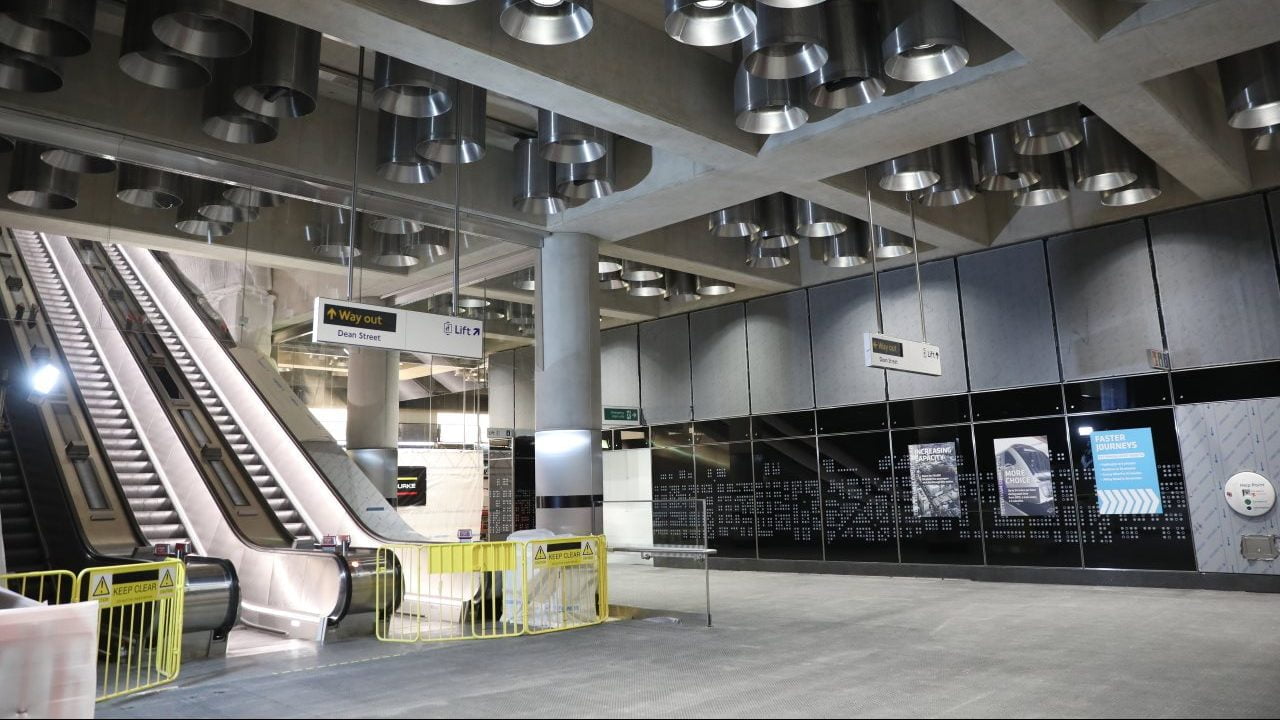Transport for London, along with Crossrail, has released new images of Tottenham Court Road station as it approaches completion ahead of its launch later this year.
They have also highlighted the role played by businesses across the UK in delivering the Elizabeth Line.
Tottenham Court Road will be the centre of London’s newest underground railway, which will run from Berkshire and Heathrow to east London and Essex.
The Elizabeth Line will open in stages from December with new state-of-the-art stations, all of which will be step-free.
96% of contracts for the Elizabeth line have been awarded to companies in the UK, supporting 55,000 full-time jobs, 62% of which are based outside London.
The station shows the contribution from firms around the UK, including:
- Protec, based in Burnley, has built and installed the station’s fire suppression systems
- Independent Glass, based in Glasgow, have manufactured Tottenham Court Road’s bespoke architectural glass panels
- GRC, based in Doncaster, have produced the innovative concrete platform cladding that will soon become synonymous with the Elizabeth line.
- Northern Ireland firm Environmental Fabrications, based in Dromore, have manufactured the structural steel during construction of the new station
- Express Reinforcements, from Neath in Wales, provided all the steel reinforcement for the station
- AJ Wells & Sons, based on the Isle of Wight, have manufactured the station’s iconic signage and Elizabeth line roundels
Tottenham Court Road now is nearly a kilometre long, it has a new plaza and canopy and has a Grade II centre point. The ticket hall has been enlarged six times its original size in recent years.
It is expected that 200,000 passengers will use the station every day.
What did the officials say?
Mark Wild, London Underground & Elizabeth line Managing Director, said:
‘The Elizabeth line will redefine our city for a new generation.
‘At Tottenham Court Road, our staff are busy preparing for a 50% increase in passengers each day, which has been made possible through extraordinary feats of civil engineering and an impressive supply chain that stretches from Inverness to the Isle of Wight.’
Sir Terry Morgan, Crossrail Chairman, said:
‘The construction of the Elizabeth line through the heart of London is one of the largest and most complex infrastructure projects ever undertaken in Europe.
‘It has been made possible thanks to the skill and dedication of suppliers from every corner of the UK, who are not only using their expertise to deliver this project, but also other projects here in the UK and abroad.’
David Shillito, Operations Director, GRC UK, said:
‘Everyone at GRC was delighted to play such a pivotal role in the delivery of this major transport infrastructure project, whose legacy will be felt for years to come.
‘The Crossrail project required specialist cladding across five of the central London stations, with each element modelled in a 3D environment and laser-scanned.
‘To succeed we’ve had to innovate, developing this form of digital manufacturing capability which has been both a fantastic and rewarding challenge for us as a supply-chain partner.
‘The panels will be a distinct, recognisable feature of the Elizabeth line, so it’s been a great privilege to be involved.’
- Visit the RailAdvent news homepage
For the latest railway news - Visit the RailAdvent Shop
For railway related goodies! - Visit LocoStop – Our New Social Network
Come and share your photo’s and video’s, join the discussion.
Find out what others are sharing - Visit the Transport for London website
For more information





Responses
Some stations on the Elizabeth Line including Whitechapel, Liverpool Street, Farringdon, Tottenham Court Road, Bond Street and Paddington through Central London that have longer platforms can accommodate 11-Car Class 345 Elizabeth Line trains. If TfL and Bombardier were to extend some of the Class 345’s to 11-Car trains and the rest as 9-Car trains or maybe all of the Class 345’s to become 10-Car trains.